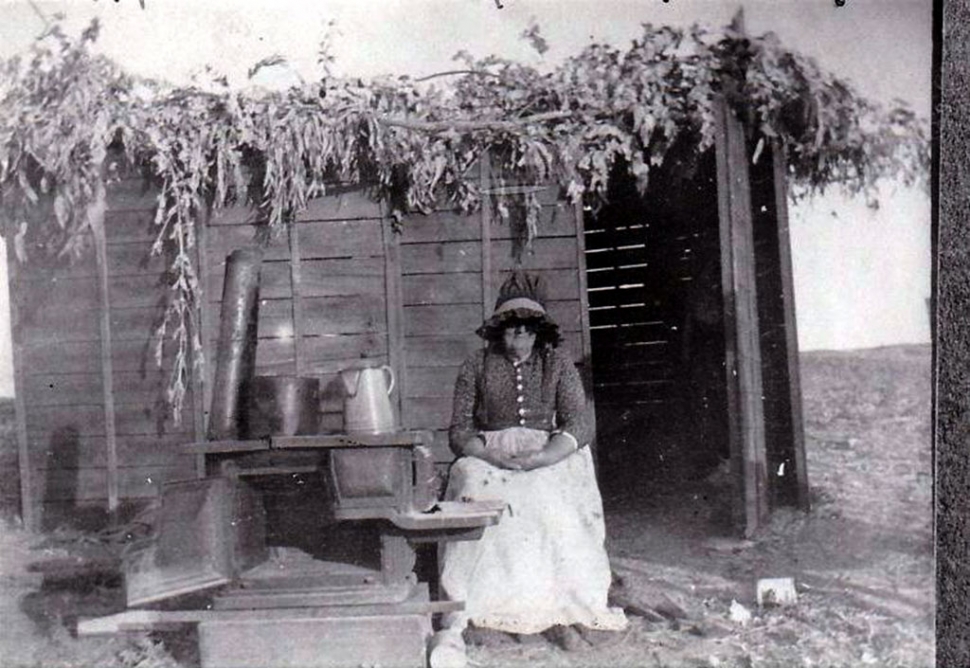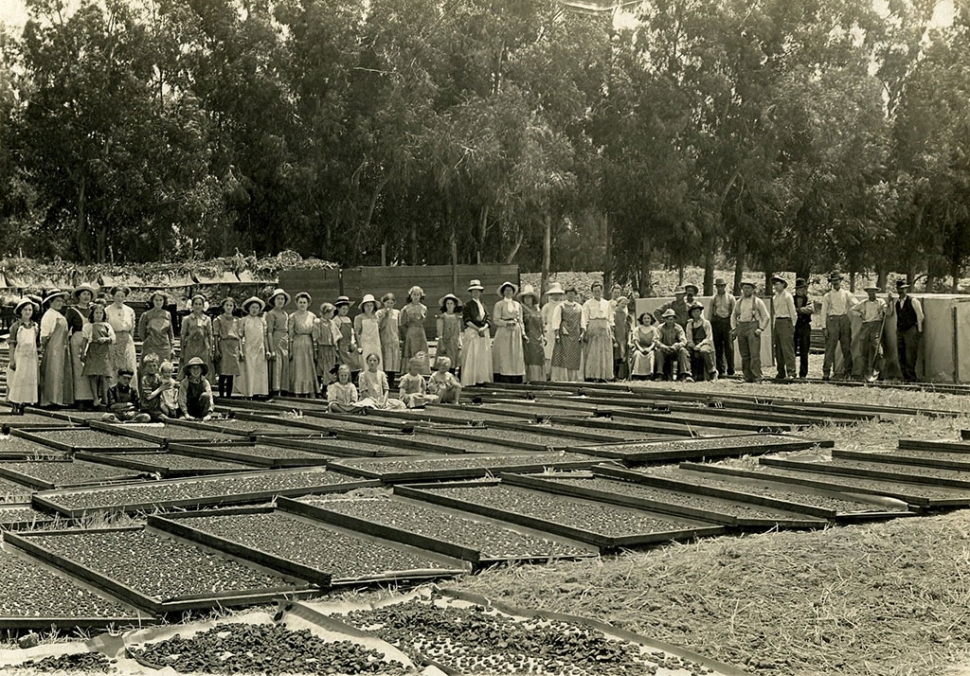|
Apricot Cultivation
 Example of the temporary housing for the apricot crew. By Anonymous — Wednesday, November 18th, 2020
 Apricot drying circa 1900. Courtesy Fillmore Historical Museum Before there was citrus in this valley, there were apricots. Apricots came to Ventura County with the Missions and spread throughout the county with the settlers. David Cook planted apricots on his property in Piru in the early 1890s. He advertised “far and wide” in 1897 for workers for a two-week season, promising accommodations: “a pleasant and safe environment for most timid and refined ladies”. The accommodations were tents. He received three hundred applications. Pitting started upstream on Piru Creek and moved down as fruit ripened. In 1893, S. A. Guiberson planted apricots and spent $1000 perfecting and patenting a pitting machine. By 1900 there were 290 acres planted in Bardsdale. Families with apricot orchards besides the Guibersons were the Bartels, Baldeschweiler (Balden), Daugherty, Stuart, Grimes, Michels, LeBards, Stolls, and Wengerts. Joseph McNab had a pitting shed in Fillmore on the corner of First and Saratoga. Tommy Arundell in Pole Creek was known for apricots which made the pitters drool. Families came from as far away as Los Angeles in the late 19th and early 20th century to work in the apricot harvest. For many it was seen as a paid vacation from city life with housing provided by the ranchers. In July 1904 it was reported that the apricot harvest was in full swing with the employment of hundreds of people young and old. There were said to be 500 pitters at work in the orchards near Piru alone. By 1912 the citrus crop far outstripped apricots and other “deciduous fruits”. That year the sale of citrus fruits from Ventura County exceeded $37 million in value, while deciduous fruits were a mere $18 million. The apricot harvest went on through the 1940s, although losing ground to the citrus industry, just as it seems today citrus is giving way to avocadoes. During the years of World War II, the local populace turned out to harvest the apricot crop, much of which was dried and sent overseas to the troops. |
